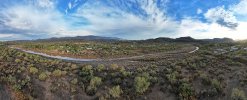A couple of comments on nits, brightness, and what they mean and do for a device used to monitor drone filght out in the sun.
First thing to know is that "brightness" is a term that relates to how we preceive the intensity of light, but it's subjective only, not actually measurable.
Second, the "nit" is a common slang term for the unit used to measure lumious intensity, the Candella per square meter. One Candella per square meter = 1 nit.
But eye perceives "brightness" changes nonlinearly. In fact, sensory perception of loudness, brightness, force, touch, taste, smell, all follow a very nonlinear law. Doubling the amount of stimulus (light, sound, etc.) does not double the perceived change. Perception follows a "power" law, where the Sensation is proportional the the Intensity raised to a power. The whole mess is complicated by the fact that the above law only really works well in a very controlled environment, which optically, isn't where we fly.
What this all means is, when we look at specs that say the RC has 700 nits, but the RC Pro is a "whopping" 1000 nits, that's actually not a very big difference. If doubling the luminous intensity doesn't actually double how humans see "brightness", then certainly a change of 43%, while noticeable, is nowhere near to the difference 700 vs 1000 nits sounds like. And it's a VERY expensive change!
Again, be careful to properly scale those intensity changes. They aren't as big as they sound.
I use the
Mini 3 Pro RC, but still find it challenging in direct sun, a situation I constantly avoid. Yes, its usable, and way better than my iPhone, but a lot of shadow details, and dark areas are blown away. Doubling its intensity would be nowhere near enough to compensate, so you'd be looking at one of those 6000 nit displays, which I don't think are available on a tablet at any reasonable price. I'd like to see an RC Pro in direct sun, but I don't expect it to be a game changer, just a bit better.
Just keep the sun off the display, and you'll be fine.











